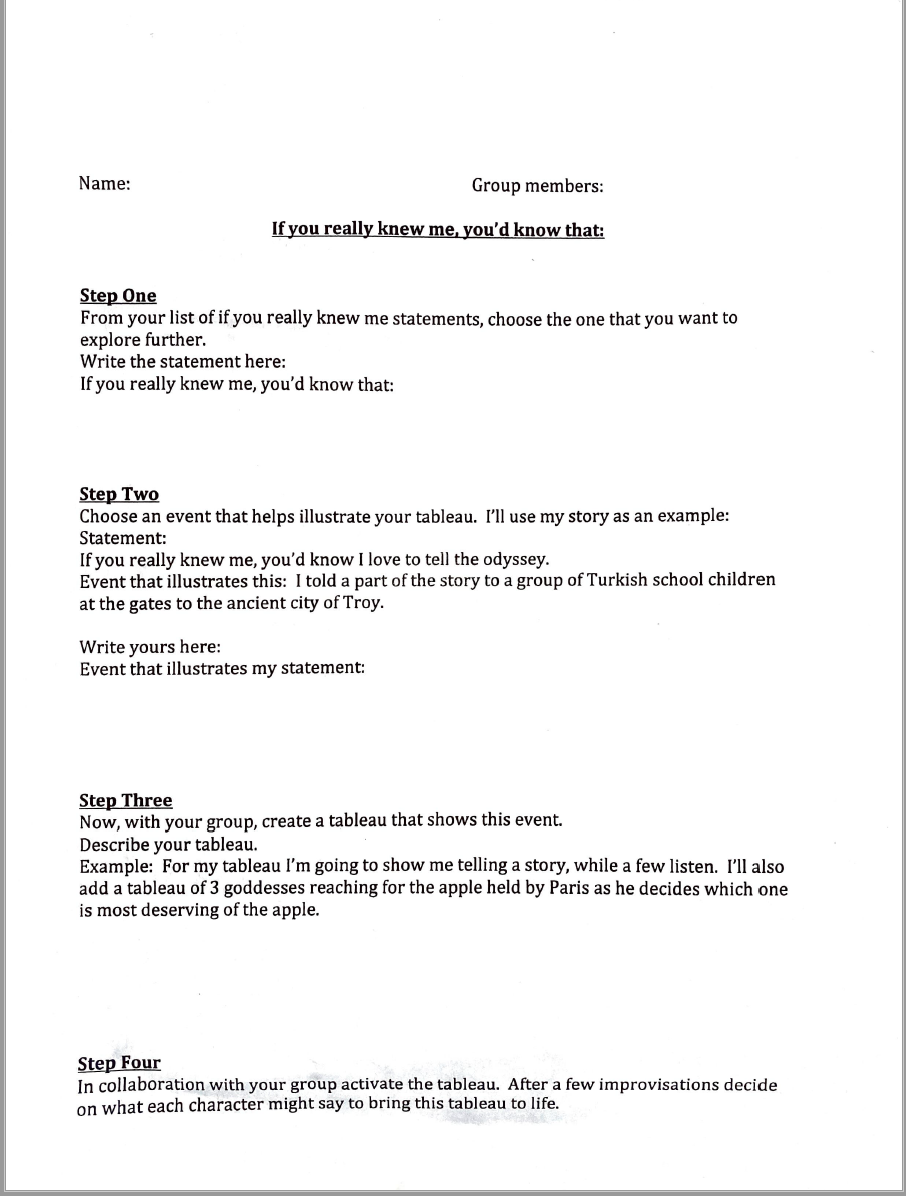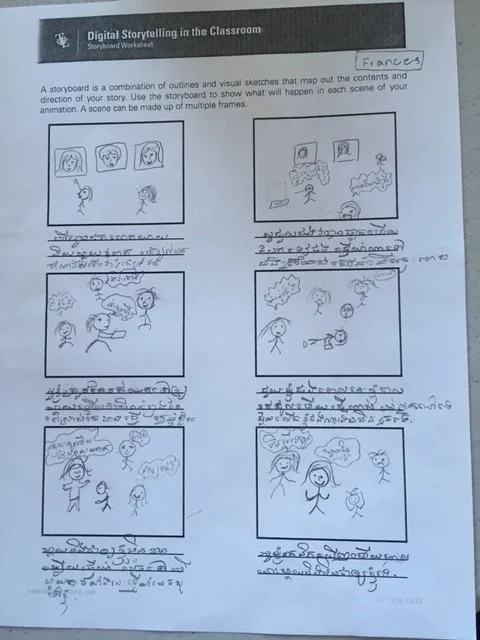If you really knew me…
Students sit in a circle, or if not possible, stand in a circle, or, at their desks.
Note: Choose your examples that are appropriate for the language and grade level of your students. For my middle school newcomer students my examples might be… “If you really knew me, you’d know that I have a cat.” “If you really knew me you’d know that I was not born in California.” You are the best judge of what to do. The instructions below came from a high school teacher that I first learned the game from and you can see how it differs from my example.
The instructor begins this exercise by giving an example of a completion of the sentence “If you really knew me you would know that…”. For example: “If you really knew me, you would know that I love to eat fresh baked bread.” Each person in turn finishes the sentence. In the second round, the instructor invites students to go a little deeper in the information that they share. The instructor models this by saying something like: “If you really know me you would know that I am the only person in my family to have gone to college.” Each person finishes the sentence again in turn. This can go for two or three more rounds. Each time, the instructor role models the type of information he/she wants to get from the students, and models attentive listening as the group goes around again.
Note: It is especially important in the first few weeks of the program to keep this exercise light. This game has a tendency to get really intimate really quickly. Students do not need to give too much information right away or they end up feeling shy and vulnerable with each other. This exercise is good to do when the students are new to the group and then to repeat after the students know each other better. If the atmosphere feels safe to the students, they are likely to share intimate pieces of information. Be sure that you remind the students about the importance of confidentiality.
With beginning language students we often provide prompts the first time through.
The game aspect, represented in the video, invites a bit more of a community feel, and helps develop a classes sense of community by highlighting similarities and celebrating differences. One person stands in the center of a circle, while everyone else sits in a chair (i.e. there is one less chair than there are people). That person than completes the sentence…If you really knew me….. Once it is spoken, everyone who it is also true for gets out of their seat and must find another seat. Example might be: “If you really knew me, you would know I am afraid of the dark.” If five people stand up, they rush to find a new empty seat at the same time that the speaker tries to take an empty seat. The person left standing now stands in the middle and comes up with something to say to complete the sentence. If only one person stands, then the speaker simply takes a seat. If no one stands, then the speaker goes again.
As a language development activity the instructor has the option to ask questions of the student, or students, who stand on a prompt. For example if someone says: “If you really knew me, you would know that I was born in another country”, and all of your students stand and switch seats, you could ask a random student, or one you want to know a bit more a follow -up question.
I find that turning it into a daily activity the first week of school and then doing it once a week or twice a week, even for a few minutes, has tremendous benefits both in terms of language development and community building.
We have also used the basic prompt for personal storytelling, asking the students to take one of their responses to the prompt, and developing it into a longer story to share with classmates, either through writing or orally.
I am also including some documents and videos of how we turned it into a digital storytelling activity, later in the school year. Using the prompt, “If you really knew me…” as our starter.
There are many other ways to structure or “do” this activity.
· I have done it as a two person activity with more advanced language learners and native speakers. To do that version:
· Group student in groups of two and decide who student A is and who is student B.
· Student A silently listens to student B for one minute (or shorter for younger groups).
· Student B finishes off the sentence, “If you really knew me, you would know that…” What is being shared about themselves can range from • Family information- “If you really knew me you would know that I am the youngest of 4 siblings.” • School information -“If you really knew me you would know that my favorite topic in school is Art.” • Favorite/ least favorite things- “If you really knew me you would know that I love broccoli.” • Anything else they want to share about themselves.
· Student B repeats this sentence over and over again completing it with a new piece of information each time. After a minute the roles are reversed and student B listens while student A shares.
I am including here a worksheet on turning the “If you really knew me..” sentence into tableau (and from there it isn’t a stretch to turn these tableau into scenes.’
And below are two worksheets we used to create digital stories from the prompt (it was based on a digital story I made first, based on the prompt: “If you really knew me, you’d know I love to tell the story “The Odyssey”. The first step is creating a digital postcard. After that we used my digital story as a mentor text for students to create their own. The “if you really knew me form mentioned is just a worksheet with the prompt listed 5 times.
And below is an example of a storyboard one of my students used for her digital story. It is in Khmer, the language of Cambodia.
Here are a few different digital stories from that class, followed by my own example.



